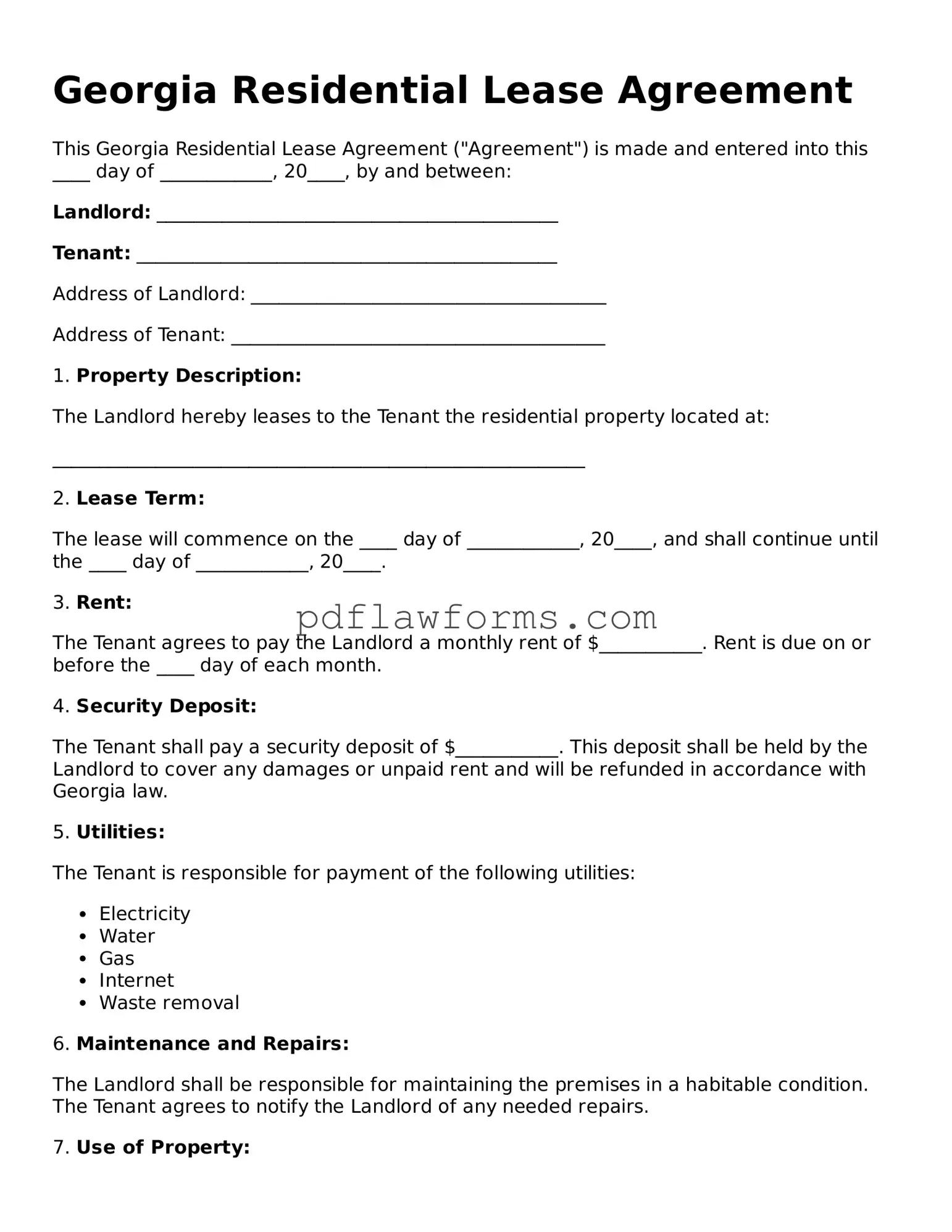Filling out the Georgia Residential Lease Agreement form can be straightforward, but there are common mistakes that people often make. One frequent error is not providing accurate personal information. Tenants and landlords should ensure that names, addresses, and contact details are correct. Inaccuracies can lead to confusion and potential legal issues down the line.
Another mistake involves overlooking the lease term. Some individuals may fail to specify the start and end dates of the lease. This omission can create uncertainty about the duration of the agreement. It is essential to clearly define how long the lease will last to avoid misunderstandings.
Many people also neglect to include the rental amount. The lease should state the monthly rent clearly. Without this information, disputes may arise regarding payment expectations. Additionally, forgetting to mention when rent is due can lead to further complications.
Security deposits are another area where mistakes can occur. Some individuals may forget to outline the amount of the security deposit or the conditions for its return. Clarity on this matter helps protect both parties and ensures that everyone understands their responsibilities.
Another common error is not detailing maintenance responsibilities. Tenants and landlords should specify who is responsible for repairs and upkeep. A lack of clarity can lead to disagreements about maintenance obligations during the lease term.
People sometimes overlook the inclusion of rules regarding pets. If pets are allowed or prohibited, this should be clearly stated in the agreement. This detail helps prevent issues related to unauthorized pets later on.
Additionally, failing to include the consequences of breaking the lease can create problems. It is important to outline what happens if either party decides to terminate the agreement early. This information can help both parties understand their rights and obligations.
Finally, not reading the entire lease before signing is a mistake many make. It is crucial to review all terms and conditions carefully. Understanding the lease in its entirety helps prevent future disputes and ensures that everyone is on the same page.
